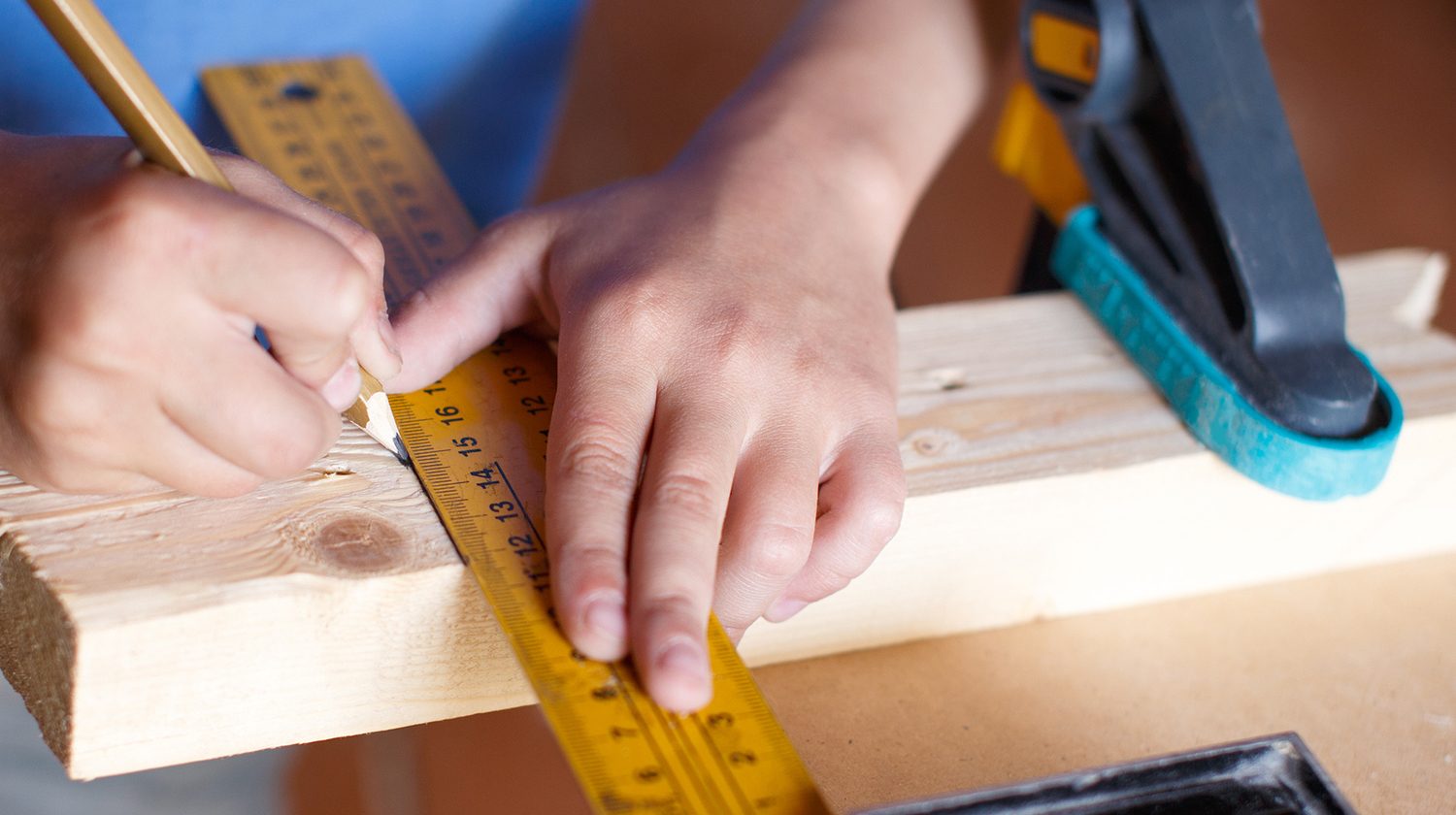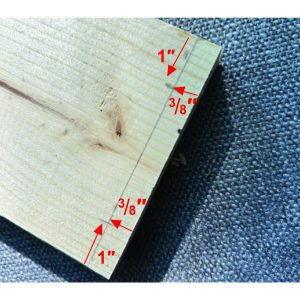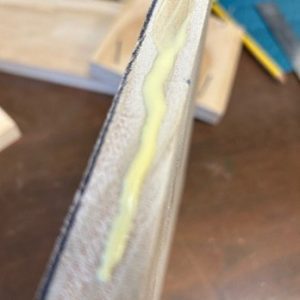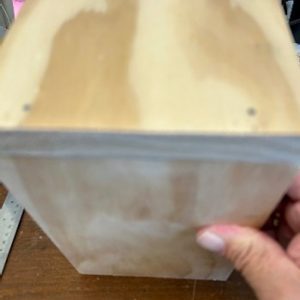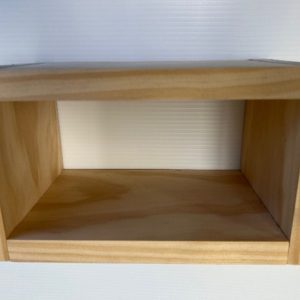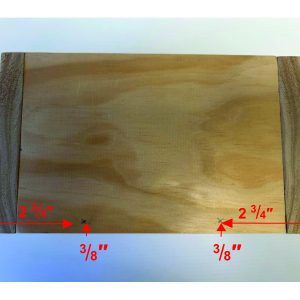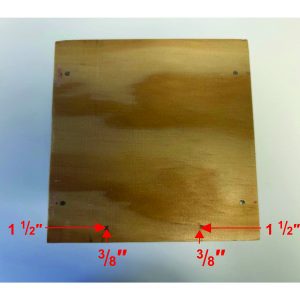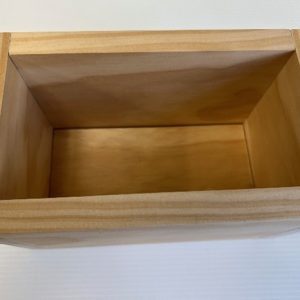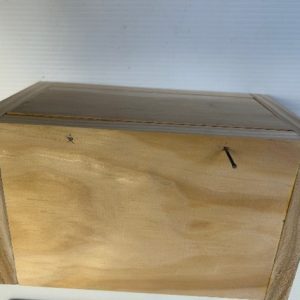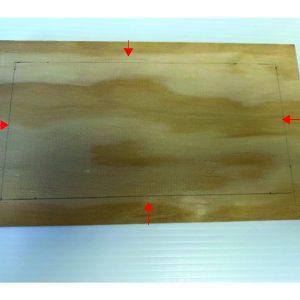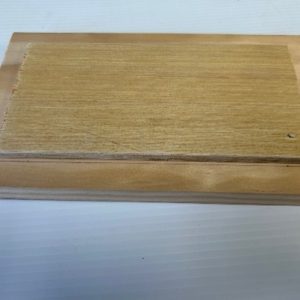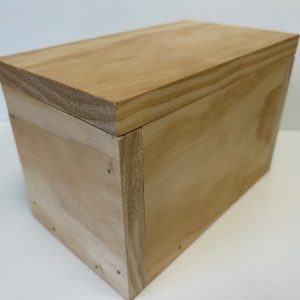Alabama 4-H

Woodworking is a great tradition. Wood is perfect for building everything from houses to hat racks. You can paint it or show off its natural grain and shine.
What Wood U Build?
This project helps you develop skills in woodworking. You must make decisions about what you like and dislike. You can design your own project, or you can search for a plan you would like to follow.
What You Will Learn
- To appreciate the basics of good design.
- To recognize and practice good and safe work techniques.
- To explore your personal design preferences, making your own decisions.
- To develop and practice skills that will be useful throughout your life.
Levels of Competition
Junior Level I: 9 to 11 years old on December 31 of the current calendar year (compete only at local and regional levels).
Intermediate: 12 to 13 years old on December 31 of the current calendar year (compete only at local and regional levels).
Senior Level I: 14 to 15 years old on December 31 of the current calendar year.
Senior Level II: 16 to 18 years old on December 31 of the current calendar year.
Refer to Alabama 4-H Competitive Events on the Alabama Extension website (www.aces.edu) to review the Competitive Events General Policy and the Age & Eligibility Chart.
Where Do I Start?
There are two ways of doing this: you may create an original design work from a pattern you have found.
If you want to create an original item, look at pictures to get ideas about what it looks like or how it is put together.
If you want to work from a pattern, visit a hardware or hobby store, search the Internet, or go to your school or community library.
It is extremely important that you practice good safety in using tools. Use tools under the close supervision of a responsible adult.
- Think Before You Cut. The most powerful tool in your shop is your brain—use it. Thinking through your cuts and movements before acting can help save both fingers and scrap wood.
- Keep a Clean Shop. A cluttered shop is an accident waiting to happen. Keeping your shop clean will help protect you (and your tools) from tripping hazards.
- Avoid Distractions. Pay attention to your actions. Looking up to watch TV or a visitor can result in your hand contacting the blade. Always wait until you have completed your cut before you take your eyes off the blade.
- Do Not Rush. Keep in mind that this is just a hobby. Take a break when you feel rushed or frustrated with a project. Mistakes happen when we rush to complete a job.
- Protect Yourself. Wearing proper shop protection is an important part of safe tool operation. Goggles, ear protection, and lung protection should be used when operating tools. Use push sticks when working close to the blade, and make sure the tool’s safety features are in place.
- Let the Tool Stop. Not giving the power tool time to wind down after a cut is an often overlooked safety mistake. Even without power, the spinning blade can still do a lot of damage.
- Fumes and Dust. Solvent fumes and airborne dust can present health and explosion hazards. Be sure you have a supply of fresh air, and use only explosion-proof vent fans.
- Wear Appropriate Clothing. Loose clothing or hair can get caught in power tools and cause severe injury.
Identification of Entry
Name, county, and level of participation should be displayed with each entry. 4-H project exhibit cards are available, but not required.
Junior and Intermediate Project: Personalized Keepsake Box
This project will help participants develop basic woodworking skills while creating a personalized keepsake box to use and treasure for years to come.
Materials:
- 1– 1″ × 6″ × 48″ Select pine board; no knots to be cut in the following lengths:
- 2– 1″ × 6″ × 8″ (Sides)
- 2– 1″ × 6″ × 5½″ (Ends)
- 1– 1″ × 4″ × 8″ (Bottom)
- 1– 1″ × 6″× 9½″ (Top)
- 1– 3/8″ or ½″ × 4″ × 8″ (Plywood)
- Optional: Letter, monogram, or other wood shape cutouts may be purchased to help participants personalize the keepsake box. (These are available at craft stores or can be ordered online.)
Important Information:
(1) Lumber pieces are listed as full inches but are really ¼″ less in thickness and ½″ less in width than what is listed. The length is correct. For example, a piece that is 1″ × 4″ × 12″ is really ¾″ × 3½″ × 12″.
(2) Purchase the letters or the cutouts before cutting the above pieces so you can make sure they will fit. If pieces need to be wider or longer, adjust the measurements as needed
- Saw for cutting pieces to length (Parent may need to assist.)
- Wood glue
- Tape measure or ruler
- Tri-square, combination square, or other similar woodworking tool or ruler
- Pencil
- Approximately sixteen 8# 1½″ finish nails
- Four ¾″ finish nails
- Nail set
- Wood filler
- Claw hammer
- 1 sheet of 120 grit sandpaper
- 1 sheet of 220 grit sandpaper
- Acrylic paint or stain and brushes or spray paint for personalizing box.
Instructions
1. Start making the keepsake box by cutting the 1– 1″ × 6″ × 48″ pine board into 2– 1″ × 6″ × 8″ pieces (sides), 2– 1″ × 6″ × 5½″ pieces (ends), 1– 1″× 4″× 8″ piece (bottom), and 1– 1″ × 6″ × 9½″ piece (top).
2. Cut the 3/8″ or ½″ piece of plywood so that it measures ½″ × 4″× 8″.
3. Take one end piece (1″ × 6″ × 5½″) and measure using a ruler, 1 inch from each side and 3/8″ from the ends and make two pencil marks. Repeat this on the other end piece. The pencil marks indicate where you will place the 1½″ finish nails during assembly.
- Step 3: Mark the locations.
- Step 5: Apply glue and position end with side and nail together.
- Step 5 Continued: Apply glue and position end with side and nail together.
- Step 6: Attach both ends to form a box.
4. At this step, take one of the end pieces and carefully hammer the four 1½″ finish nails about 3/8″ into the end pieces so they are firmly in the wood but do not protrude out the other side. Repeat this with the second end piece.
5. Stand a side piece on its end and apply a line of wood glue along the other cut end. Line up one of the end pieces to sit on top of the side piece with the glue. Make sure it is held firmly and that the edges are flush. Carefully hammer the two nails along that side into the side piece until the heads are flush with the wood. Repeat this step with the other side piece so the end piece is attached to both side pieces.
6. Repeat step five with the other end piece to have a rectangular box with no top or bottom.
7. Examine the box and decide which open end will be the bottom. Measure along the bottom edges (ends and sides) and use a pencil to mark your nail locations (two along both ends and two along both sides). The position of the nails needs to be 3/8″ up from the bottom of the box, 1½″ from the edge of the end piece, and 2¾″ from the edge along the sides.
- Step 7: Side view of box with nail locations marked.
- Step 7: End view of box with nail locations marked.
- Step 8: Check to make sure bottom fits and then glue or nail it into place.
- Step 8 Continued: Check to make sure bottom fits and then glue or nail it into place.
8. Take the bottom piece (1– 1″ × 4″ × 8″) and carefully insert it inside the box so it is flush with the edges along the bottom. The piece should fit snugly, but if it is too large to fit, carefully reduce the length or width so it will fit. Once it fits, apply a small amount of glue along its four edges, reinsert the bottom so it is even with the sides and end pieces, and nail it into place.
9. Now that the bottom is in place, check the ½″ × 4″ × 8″ (plywood) piece and make sure it will fit in the top of the box. Remove it and put it to the side until step 12.
10. Check that the 1″ × 6″ × 9½″ (top) piece will sit on the top of the box and line up flush on all sides. Trim the top piece if it has any overhang.
11. Place the top piece on your work area, bottom side up. Measure ¾″ inwards along all four edges and mark a 4″ × 8″ rectangle on the bottom side of the top.
- Step 11: Measure inward from the edge ¾″ all around the top.
- Steps 12 & 13: Position, glue, and nail the plywood piece into position.
- Step 14: Apply wood filler to nail holes and sand the box.
12. The piece of plywood should fit exactly inside the rectangle you just drew. Check it for positioning. Apply glue to one of the flat sides of the plywood and then position it inside the rectangle you drew on the top piece. Let it set for a couple of minutes, and then flip the lid over and insert the plywood inside the top of the box. Make sure the top fits flush along all four sides. If it doesn’t, you should still be able to move the piece of plywood to make it fit correctly. Once you are satisfied with the fit, carefully lift the top off and place it back on the work area with the plywood side up (Don’t let the plywood move, but if it does, reposition it.) Place a flat, heavy object on top of the plywood to help provide downward pressure. Let it dry for at least an hour.
13. Once the glue is dry, nail four ¾″ finish nails, one in each corner to help secure the plywood to the top.
14. When the glue is finished drying, use a hammer and nail punch/set to sink the nail heads so they are just below the wood surface. Once the nails are set, go around the box and fill each nail hole with filler. Allow the filler to dry and then sand the entire box, starting with 120 grit sandpaper and then sand again with the 220 grit paper. Rub your hands over the surface of the wood, feeling for any rough areas. Sand again if needed.
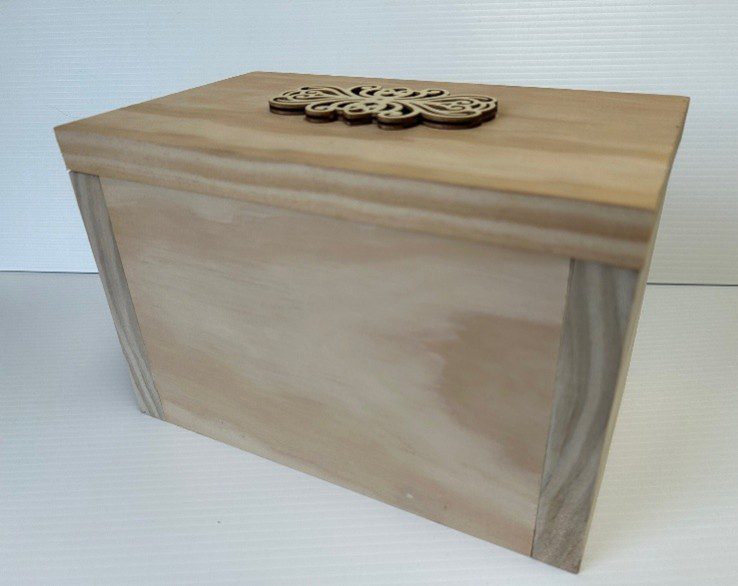
Steps 15 & 16: Paint/stain and apply personalization to the box.
15. Once the sanding is complete, you may add your personalized monogram, initials, or other cutout object to the top of the lid before painting, staining, and sealing or paint, stain, and seal before adding your personalization. How you finish it is up to you.
16. Your keepsake box is now complete and ready for use.
Senior Level I & II Project: Sofa Table
The basics are simple:
1. Compete by yourself or on a two-person team. Youth on teams must be the same 4-H age level (e.g., Senior Level II).
2. You must create an original design or work from a pattern you have found.
3. You must do all the construction yourself.
4. You can’t use a kit.
5. Your name and county need to be on a small piece of tape attached to your project.
6. Provide a copy of the plan for your sofa table.
7. Your sofa table must meet the following criteria:
- Any type of wood may be used in this project.
- The table must measure between 30″ and 36″ in height. (Think about how tall the sofa is as the table should be about level with the back of the sofa.)
- The width of the table must be between 10″ and 15″.
- The table must measure between 72″ and 78″ in length. (A rule of thumb is that the table should be around 12″ shorter in length than the sofa that it sits behind. An average sofa is between 84″ to 90″ in length.)
- The table may be stained, painted, or a combination of both.
- The table must have at least one shelf.
8. Seniors must identify any safety hazards.
Career Connections
Skills developed through this project have direct connections to many exciting and rewarding careers and lifelong hobbies. These include carpentry and cabinet making, construction, design, teaching, industrial design, interior design, theater set design, fine arts and crafts, and hardware sales. There are also opportunities to learn how to build and sell your own new products.
Disqualification in What Wood U Build
- Not following the instructions listed under the project on page 2.
- Building the game larger than the regulation AOC dimensions
- Using a kit.
- Creating a design for the woodworking project that features culturally or racially insensitive images that violate 4-H’s values of respect, fairness, and caring. This will not be permitted.
- Failing to have written permission if you use any logo or art design that is trademarked or copyright protected.
Community Service
Telling a great story, showcasing projects at a community library, speaking at a local nursing home, or organizing a community cooking or building blocks workshop are great opportunities to serve others. Serving others helps you build academic skills, learn civic responsibility, and develop leadership. It may also give you a good opportunity to meet new people, publicize 4-H, and practice your communication skills. Alabama 4-H is now requiring all senior level 4-H members to add a community service component to all 4-H Competitive Events. Each senior level 4-H member will have to complete the 4-H Community Service Report as part of his or her project. 4-H members will be disqualified if the community service report is not included.
You must decide what service you can provide and not have a parent or 4-H leader make this decision for you. Groups of young people are encouraged to work together to discover how they can serve their community.
Score Sheet
View the score sheet for What Wood U Build? in the corresponding PDF download below.
Doyle Keasal, Extension 4-H Program Specialist, Auburn University
Revised August 2025, What Wood U Build?, 4HYD-2241-S

